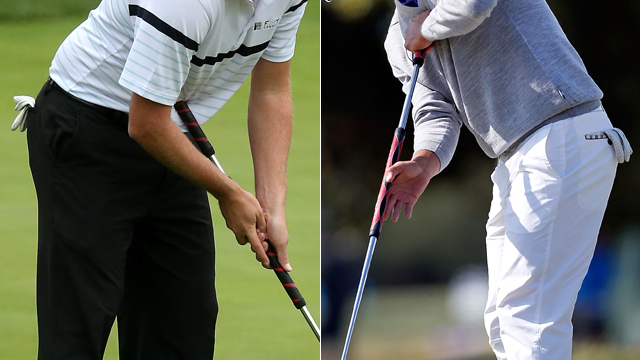NEWS
PGA Tour decides to support new rule on the anchoring of putting strokes

Click here to read the official statement from The PGA of America
JACKSONVILLE, Fla. -- The PGA Tour will follow a new rule that bans the anchored putting stroke used by four of the last six major champions, asking instead on Monday for a temporary reprieve for those who play the game for fun.
The announcement after a PGA Tour board meeting is the final piece of confirmation from a major golf organization for Rule 14-1b, which will take effect on Jan. 1, 2016 when the next editio of the "Rules of Golf" is published. The rule makes it illegal for players to attach the end of the club to their body to make a stroke.
Adam Scott used a long putter held against his chest when he won the Masters. Ernie Els (British Open) and Webb Simpson (U.S. Open) used a belly putter last year. Keegan Bradley in the 2011 PGA Championship was the first major champion with a belly putter.
The Royal & Ancient Golf Club and U.S. Golf Association proposed the new rule in November and allowed for a three-month comment period. They formally adopted the rule in May.
Finchem said in February the tour was opposed to the new rule because no data suggested an advantage and no "overriding reason to go down that road." The tour's opinion was shaped by a players-only meeting that month.
"In making its decision, the policy board recognized that there are still varying opinions among our membership, but ultimately concluded that while it is an important issue, a ban on anchored strokes would not fundamentally affect a strong presentation of our competitions or the overall success of the PGA Tour," Finchem said in a statement.
"The board also was of the opinion that having a single set of rules ... applicable to all professional competitions worldwide was desirable and would avoid confusion."
The decision to go along was not a surprise. The common ground by all sides was the importance of golf being played under one fundamental set of rules, as has been the case for hundreds of years.
The wrinkle that came out of the tour's meeting was asking the R&A and USGA to give amateurs more time to adjust away from the anchored stroke. PGA of America President Ted Bishop was among those concerned that banning the stroke used for long putters would force too many people to quit the game out of frustration, at a time when golf is worried about decreasing participation.
"The policy board continues to believe that extending the time period the ban would go into effect for amateurs would be beneficial for golf participation and the overall health of the game," Finchem said.
Finchem cited the USGA changing the groove configuration for irons in 2008. It was effective for elite play in 2010, but does not apply to recreational play until 2014.
But the decision on grooves was an equipment issue. Anchoring is a change in the actual rules of golf. For the USGA and R&A, which set the rules for the 600-year-old game, to allow amateurs more time to use anchored strokes would be created two sets of rules.
The PGA of America also said it would follow the new rule, while expressing concern about amateurs.
"We continue to feel strongly that the amateur player needs a longer period of adjustment to this rule," Bishop said.
Neither Finchem nor Bishop recommended a date for amateurs.
Finchem also sounded a warning that the tour reserves the right to make its own rules for its players, and that the USGA pledged "open and effective communication" on any future discussions on the rules.
"It is not inconceivable that there may come a time in the future when the policy board determines that a rule adopted by the USGA, including in the area of equipment, may not be in the best interests of the PGA Tour, and that a local rule eliminating or modifying such a USGA rule may be appropriate," he said.
